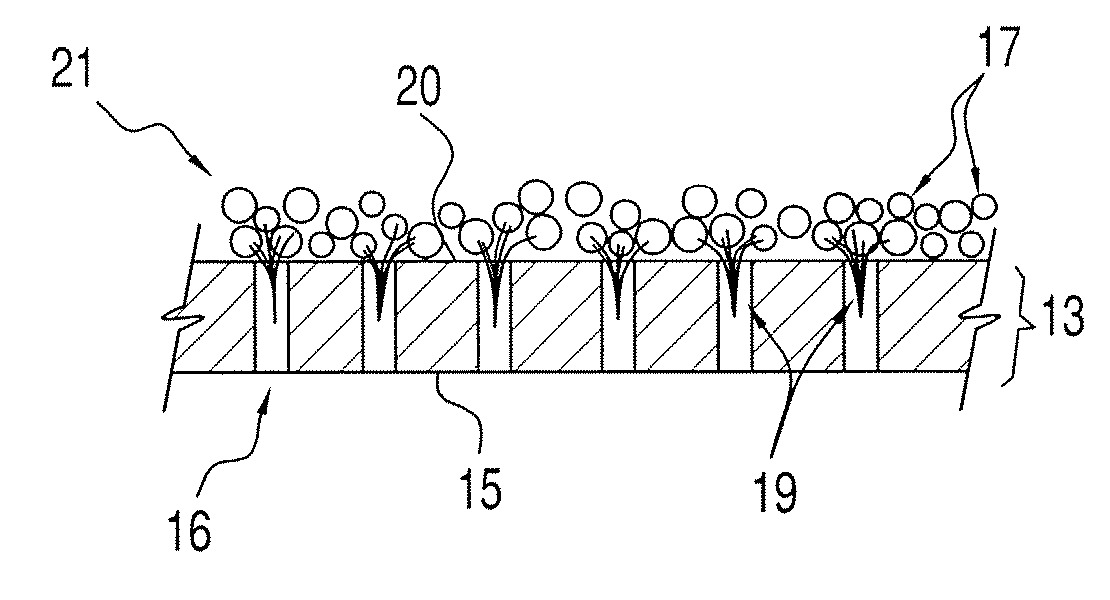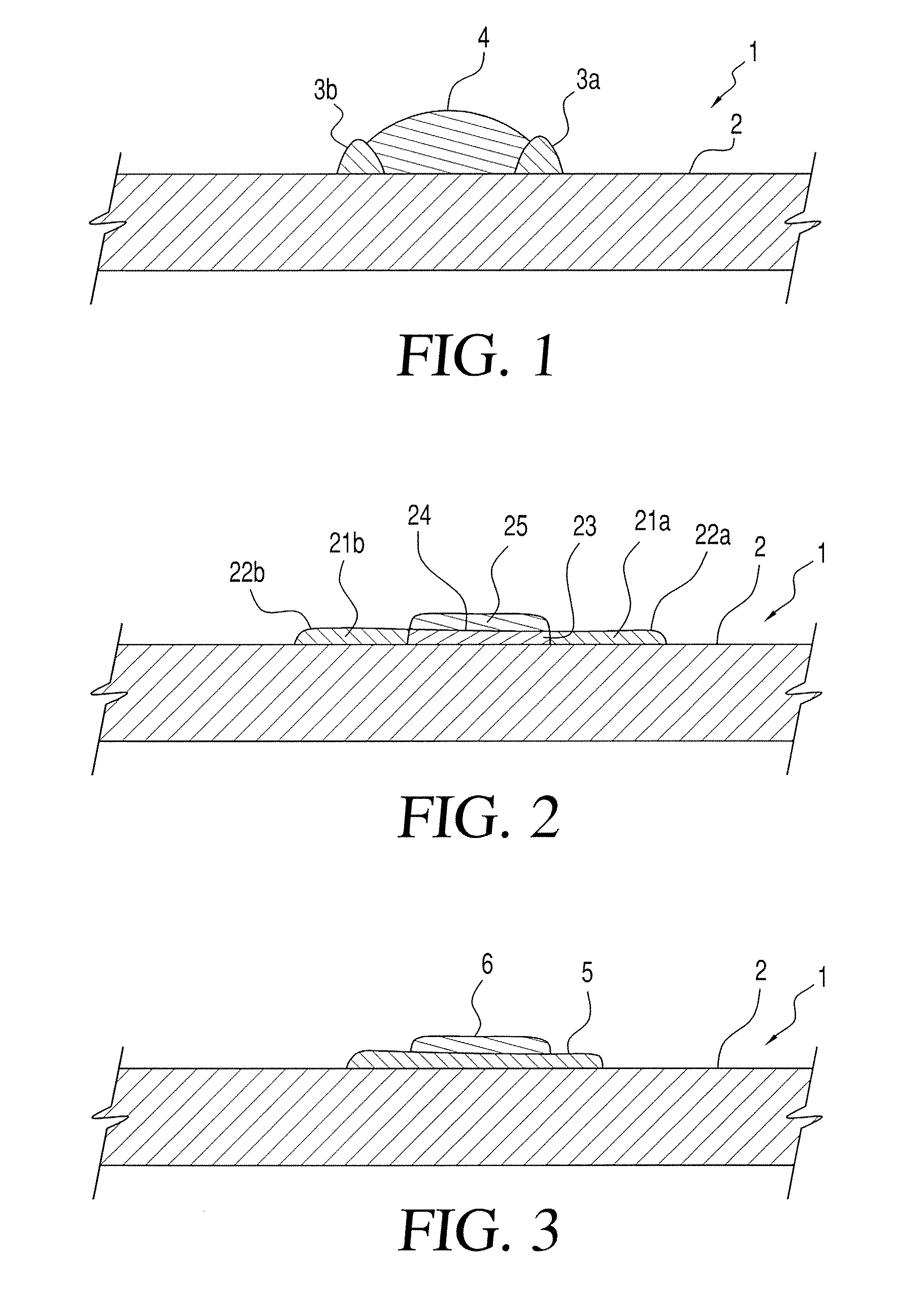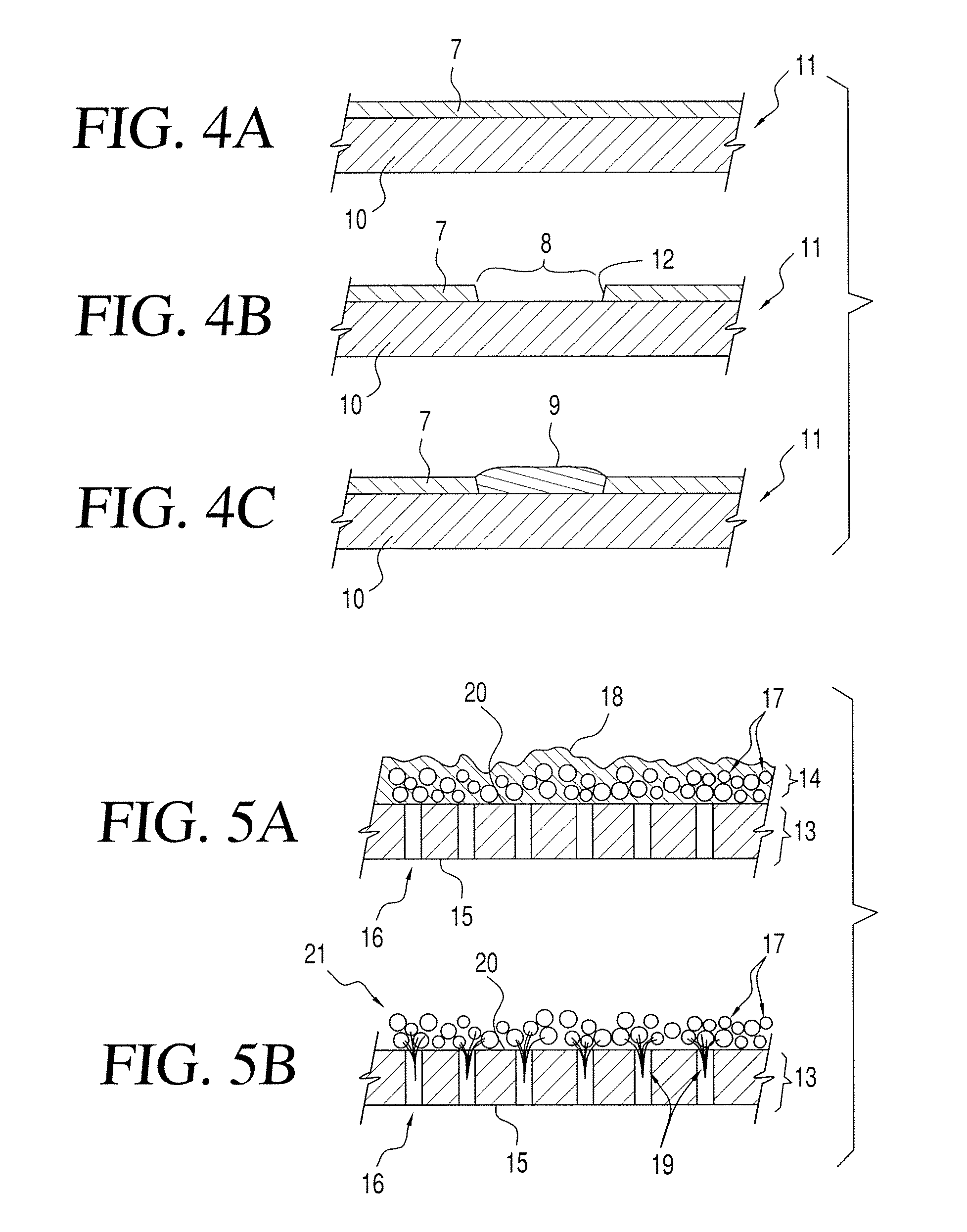Controlling ink migration during the formation of printable electronic features
a technology of electronic features and ink migration, which is applied in the direction of conductive pattern formation, dielectric characteristics, coatings, etc., can solve the problems of affecting the final product properties, affecting the flow of electrons, and affecting the properties of electronic ink prior to printing,
- Summary
- Abstract
- Description
- Claims
- Application Information
AI Technical Summary
Benefits of technology
Problems solved by technology
Method used
Image
Examples
example 1
A. Example 1
Treating a Kapton Substrate with a Hydrophobic Chemical Agent
[0244] The following are examples that demonstrate the effect of treating a Polyimide (Kapton) film with a hydrophobic chemical agent combined with printing a silver nanoparticle-containing ink onto the substrate.
[0245] An ITI XY print system equipped with a Spectra SX-128 ink jet head was set up to print a silver nanoparticle-containing ink comprising approximately 55 weight percent silver. An image comprising single pixel lines having a resolution of 1,050 dots per inch was created and used in this example. The Kapton substrate was cleaned by wiping the substrate with denatured ethanol to remove some of the organic contaminants.
[0246] Sample 1 (control) did not receive any additional surface modification and was not treated with a hydrophobic chemical agent. Once the ink was deposited onto the substrate via the Spectra SX-128 ink jet head, the substrate was placed in a forced air convection oven at 200° C....
example 2
B. Example 2
Treating a LCD Glass Substrate with a Hydrophobic Chemical Agent
[0249] A second example demonstrated the effect of treating a Liquid Crystal Display (LCD) Glass substrate, or more specifically, Eagle 2000 by Corning Inc., with a hydrophobic chemical agent combined with printing a silver nanoparticle-containing ink onto the substrate.
[0250] An ITI XY print system equipped with a Spectra SX-128 ink jet head was set up to print a silver nanoparticle-containing ink comprising approximately 55 weight percent silver. Images comprising single pixel lines and having a resolution of both 750 dots per inch (Sample 3) and 1,050 dots per inch (Sample 4) were created and used in this example. The LCD Glass substrate was cleaned by wiping the substrate with denatured ethanol to remove some of the organic contaminants.
[0251] Sample 3 (control) did not receive any additional surface modification and was not treated with a hydrophobic chemical agent. Further, the 750 dots per inch ima...
PUM
| Property | Measurement | Unit |
|---|---|---|
| surface energy | aaaaa | aaaaa |
| particle size | aaaaa | aaaaa |
| particle size | aaaaa | aaaaa |
Abstract
Description
Claims
Application Information
 Login to View More
Login to View More - R&D
- Intellectual Property
- Life Sciences
- Materials
- Tech Scout
- Unparalleled Data Quality
- Higher Quality Content
- 60% Fewer Hallucinations
Browse by: Latest US Patents, China's latest patents, Technical Efficacy Thesaurus, Application Domain, Technology Topic, Popular Technical Reports.
© 2025 PatSnap. All rights reserved.Legal|Privacy policy|Modern Slavery Act Transparency Statement|Sitemap|About US| Contact US: help@patsnap.com



